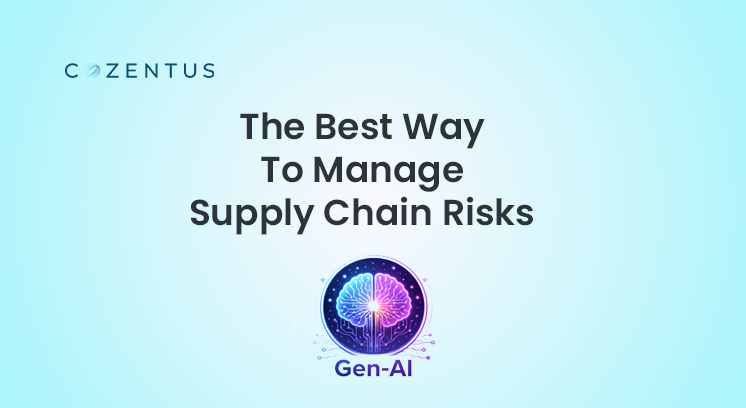According to a Gartner Supply Chain Executive Report published in January 2022, 68% of supply chain executives have been continually reacting to disruptions since the beginning of 2019. It's scarcely news that businesses need to strengthen their supply chain management strategies.
But what precisely is resiliency?
The capacity of a company to prevent, absorb, and recover from the business effect of disruptions via a risk-balanced approach to product, supply chain visibility solutions, strategy, and network architecture is referred to as supply chain resilience.
Consider the summertime game Rock the Pool. The goal is for youngsters to launch enough cannonballs into a pool quickly so the water laps over the pool's edge. Each youngster in this situation is causing what is known as a disruptive incident.
The same may be said for supply chains. Of course, there will be more extensive and unanticipated occurrences, and businesses must prepare for them. Unlike incompetent organisations, competent companies prepare for interruptions.
Directors/ Editors’ Note
Over the last three years, global supply chains have been stretched to their breaking point, exposing a sophisticated system's flaws that impact everything from toilet paper to computer chips. These disruptions influence more than simply everyday life; they affect local and national economies and enterprises of all sizes.
Ordering things from across the nation or even outsourcing manufacturing to foreign countries was straightforward. Because of several causes, we are now facing the limits of these models. The present supply network is fragile and prone to disruptions in the case of a pandemic, natural catastrophe, or conflict, according to a 2022 Council of Economic Advisers assessment.
Finding solutions to supply chain interruptions will go a long way toward restoring local and global commerce, enhancing the customer experience, and boosting company performance.
Here are five strategies for increasing supply chain resilience.
Get a better understanding of your multi-enterprise supply chain
There's no getting around it: you require visibility throughout your supply chain visibility solutions. It may go back five layers or more, deep into your supply network, before moving forward, perhaps four levels, into your distribution network. This visibility is required to predict difficulties, deal with them proactively, and make course changes. It should be no surprise that many interruptions occur at Tier 2 or below the supplier level. If you have visibility, you may consider pivoting to an alternative, drawing on safety stock, or any other timely remedy.
A high level of visibility also allows you to integrate machine learning capabilities into your supply side to deliver supply chain predictive analytics. With this kind of artificial intelligence for supply chain, you can quickly see the effect of a single supplier or equipment failing; it will inform you which orders will be delayed and even recommend a preventative step.
Examine your supply chain
It's challenging to enhance anything if you don't have a starting point. The first step is undertaking a comprehensive audit of your supply chain to identify the most vulnerable regions.
For example, you may manage many warehouses while relying on a single transportation firm. That component of your supply chain is most likely vulnerable since you lack backups.
When you audit your supply chain, you may evaluate vulnerabilities based on their risk and importance to your business outcomes. You may use this information to prioritise the matters you want to handle first.
Create buffers in your inventory
The supply chain management industry is now divided on whether we should transition from a just-in-time inventory management approach to a just-in-case inventory management strategy. While your rivals are deliberating, it's an excellent opportunity to look throughout your whole organisation and evaluate where and how much inventory you should put, holistically and by individual locations and product lines.
Many businesses make the error of doing this review by considering each node in the supply chain individually. It's not enough to assess how much safety stock each of your four factories, three distribution hubs, and ten suppliers needs. You should examine your whole supply chain, considering variations in lead times and demand, so you can decide where and how much safety stock to store within the network. This strategy keeps you lean while preparing you to deal with situations before they become disruptive.
Increase supplier diversity
While having good ties with your business partners is critical, placing all your company eggs in one basket is no longer a viable option. It's time to diversify your suppliers if you wish to recover from supply chain interruptions.
If you get all of your merchandise from a single source, you will be trapped if they can't deliver due to labour concerns or a difficulty farther down the supply chain. In the absence of one of your business partners, establishing partnerships with other suppliers helps you continue to operate.
Stick to plans that account for unpredictability
Nowadays, supply chain predictive analytics or predictive variables such as a single demand signal, a definite supply lead time, or a fixed production rate are generated in operational plans. Businesses will inherently fail to execute such a strategy since it does not account for many variables. A balance must be struck between optimistic and pessimistic demand forecasting in supply chain management. It makes no sense to plan for a specific item to take five days to deliver when you already know the supplier needs four to eight. The plan must consider this range.
Run many scenarios to ensure that the plan you create has a strong likelihood of fulfilling goals — one with an 80% chance of success rather than a 35% chance. Artificial intelligence, particularly machine learning deployment, has much to offer in this area and must be utilised throughout the whole supply chain management.
Bottom Line
The COVID-19 epidemic highlighted significant flaws in the supply chain. As these flaws have continued over the years, it has become evident that organisations must make efforts to construct a more robust system that would be more efficient and resistant to future disruptions. Cozentus can assist your company in increasing efficiency, improving visibility across the supply chain, providing a better customer experience, and improving overall business performance.
Recent Post
Subscribe to our newsletter
Stay updated on latest trends and news in the supply chain and logistics industry







